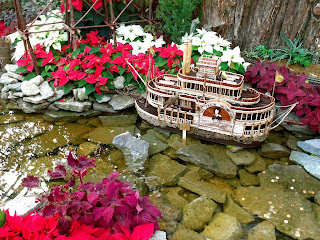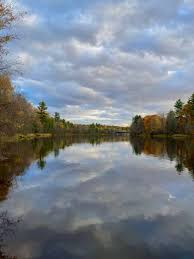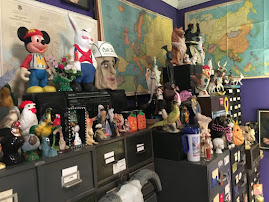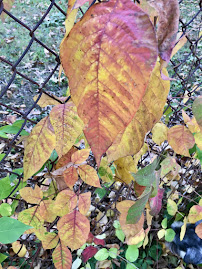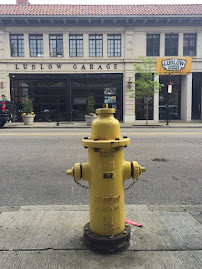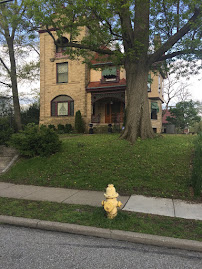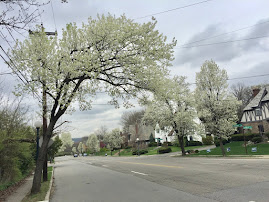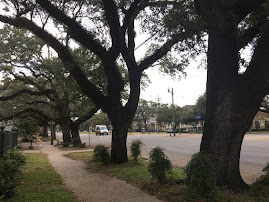Dear
George,
I’d
say life is more meaningful when we know as much as possible about the holidays
we’re celebrating. New Years would
be a perfect example. It goes back
about 4000 years to the ancient Babylonians, so there are centuries and centuries of information to be
assimilated. At first this seems
like a very difficult task, it but becomes much clearer and more manageable
when we approach it alphabetically.
Here are 26 important things know about New Years from A to Z.
Love,
Dave
- Auld Lang Syne: The Scottish song was written by Robert Burns in
the 1700's and literally means "old long since," referring to
the remembrance of old friends.
- Black-eyed peas: Many in the southeastern U.S. eat black-eyed peas
on New Year's because they are believed to bring good luck. According to legend, black-eyed
peas were originally cattle food in the Old South. However when residents faced
starvation during the Civil War’s 40-day Battle of Vicksburg they had no
choice but to eat black-eyed peas, thus starting a southern
tradition.
- Caesar: Julius Caesar established January 1 as the first day of
the new year in 46 B.C.
- Drunk driving: New Year’s Day is the worst day of the year for
fatal crashes involving drunk drivers. Half of fatal crashes in the U.S. on this date involve
a driver with a blood alcohol content of .08 or greater.
- Emancipation: On Jan. 1, 1863, President Lincoln declared slavery
unlawful in the Emancipation Proclamation.
- Facebook: 750 million
photos were uploaded to Facebook on the New Year’s weekend in 2010.
- Gunfire: Shooting guns in the air is a widespread way of
celebrating New Years. In
Puerto Rico about 25 people are injured and 2 people die each year from celebratory
gunfire on New Year’s Eve.
- Hime-Hajime: A Japanese expression for the first time a couple has
sex after the new year.
“Hime” means “young lady” or “princess”, and “Hajime” means
“beginning”.
- Immigration: On Jan .
1, 1892, Annie Moore, a 15-year-old Irish girl, was the first of over 12
million immigrants to pass through Ellis Island.
- Janus: January is named for the Roman god Janus, the god of gates
and doors. One of Janus’s two
faces looks forward; the other, backward. Legends held that at midnight on the last day of
December Janus would see the past year and the new year at the same time.
- Kissing: 44% of
American adults plan to kiss someone at the stroke of midnight on New
Year's Eve.
- Las Vegas: Tickets for the New Year’s Eve Party at the Bellagio
Hotel and Casino in Las Vegas start at $10,000 per person.
- Mummers' Parade: 10,000
Philadelphians march through the city in elaborate costumes in the
Mummers' Parade on New Year's Day.
- Noise: Welcoming the new year with noisemakers goes back to
ancient times when it was felt that noise scared off evil spirits. In Denmark people throw pieces of
broken pottery against the sides of friends’ houses. In Japan dancers go from house to
house, making strange noises and pounding bamboo sticks.
- Old New Year: January
1 is officially New Year’s Day in Russia and other Eastern European
countries. However, the
Russian Orthodox Church has continued to use the Julian calendar in which
Jan. 13 is the beginning of the new year. Many orthodox people celebrate New Years on both Jan. 1
and Jan. 13.
- One Liner: Many people look forward to the New Year for a new
start on old habits.
- Passing out: 40% of
young people (18-25) report that they have passed out before midnight on
New Year’s Eve. 25% say
they’ve gotten into a fight; 40% have woken up with an injury.
- Quotes (about New Year's Eve): "I get half a million just to
show up at parties. My life
is, like, really, really fun."
(Paris Hilton)
- Resolutions: The most popular New Year's resolution is to lose
weight. About 60% of
Americans make this resolution each year. 8% are successful in achieving their New Year’s
resolution.
- Superstitions: In Brazil people who live near the beach used to
jump seven times into the waves after midnight because doing so brings
wealth. In Spain people eat
twelve grapes at midnight in order to secure twelve happy months in the
coming year.
- Times Square Ball: In
a tradition that began in 1907, about a million people gather in Times
Square on New Year's Eve to watch the ball drop. The current ball, made by Waterford Crystal, weighs
11,875 pounds, is 12 feet in diameter, is covered with 2,688 crystals. and
is worth about $2 million.
- Underwear: An old-time Spanish tradition says that wearing yellow underwear on New Years leads
to wealth and success, while red underwear means a year of passion and
romance.
- Voodoo New Year: The
Voodoo New Year in Benin features a witchcraft festival in which men slash
their bodies with knives and pour alcohol into the wounds.
- “Wrong Way” Riegels:
Recovering a fumble in the Rose Bowl game on New Year’s Day, 1929,
U. Cal-Berkeley center Roy Riegels ran 60 yards the wrong way, resulting
in Georgia Tech's victory by a score of 8-7.
- Xin nian…: “Happy New Year” in Mandarin Chinese is “Xin nian yu
juai.” In Swedish, “Gott Nytt
Ar.” In Laotian, “Nyob Zoo
Xyoo Tshiab.”
- Y2K: Experts
prophesied worldwide computer catastrophes because of computers being
programmed to record dates using only two digits (e.g., 99) instead of 4
(e.g., 1999), thus meaning that the year 2000 would incorrectly register
as 1900. Despite a few
scattered problems, New Year 2000 came and went without major digital
disasters.
- Zydeco: Chubby Carrier headlines the zydeco party at New Orlean's
Hyatt Regency on New Year's Eve.
SOURCES: www.askinyourface.com; www.blogs.mytimes.com;
www.brainyquote.com; www.brownielocks.com; www.business-news.top5.com;
www.egotvonline.com; www.history.com; www.historyorb.com; www.holidays.net; www.infoplease.com; www.policymic.com; www.travel.ninemsn.com; www.weirdfacts.com
G-mail Comments
-Linda K-C
(12-31): Great post, as always.
-Gayle C-L
(12-30): David, Awesome as usual!!
Have a great New Year. Lots
of love. G
-Jennifer M
(12-30): Good work finding
something for every letter!





















